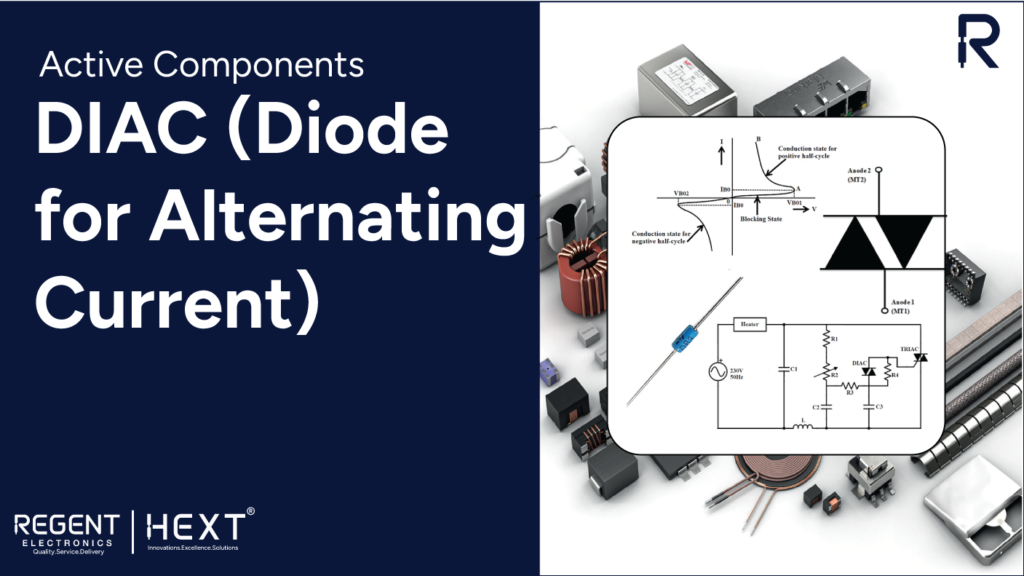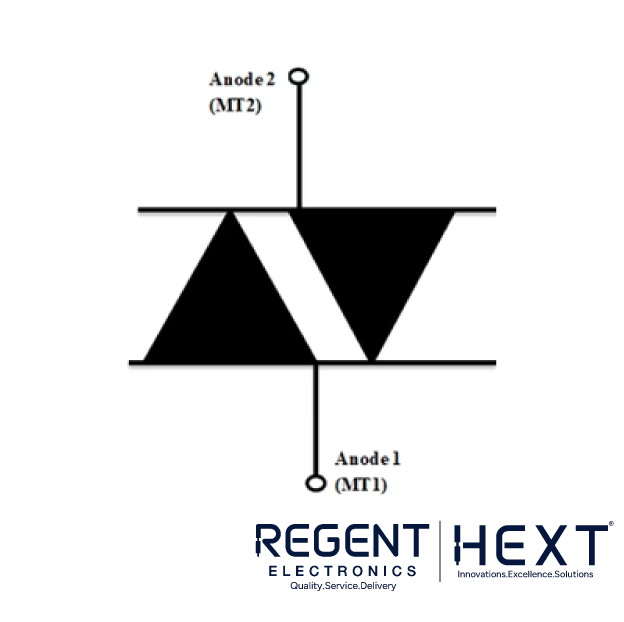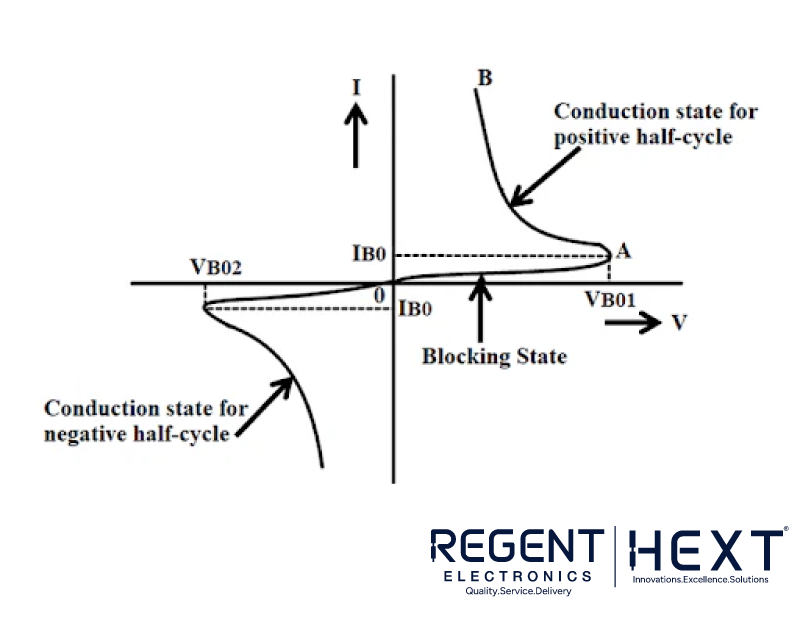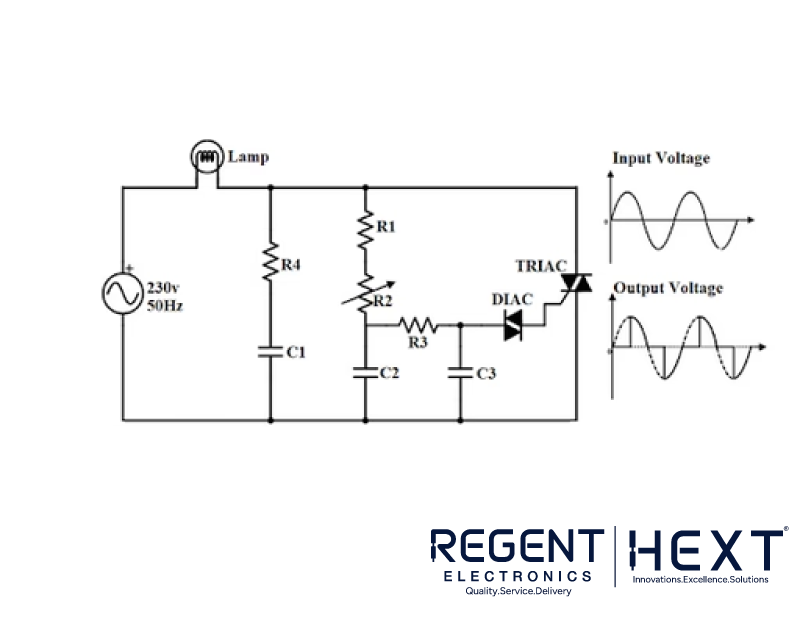
Understanding DIAC (Diode for Alternating Current): A Comprehensive Guide
Welcome to Regent Electronics! In this blog, we’ll explore the DIAC, its construction, working principles, and various applications. DIACs are versatile components widely used in electronic circuits for switching and power control. Let’s dive in!

What is a DIAC?
DIAC stands for Diode for Alternating Current. It is a bidirectional semiconductor device designed to conduct current in both directions when a specific voltage threshold, known as the breakover voltage, is reached. Unlike other thyristors, DIACs lack a gate terminal, making them unique in their functionality. These components are essential for triggering TRIACs and other thyristor-based circuits, ensuring smooth and reliable performance.
Symbol and Structure of DIAC

Since the DIAC operates in both directions, its terminals are labeled as A1 (MT1) and A2 (MT2) instead of anode and cathode. These terminals are reversible, much like those of resistors or capacitors. The absence of a gate terminal simplifies its design while retaining efficiency.
How Does a DIAC Work?

DIACs can conduct during both the positive and negative half cycles of an AC signal. Here’s how it functions:
- Below Breakover Voltage: When the applied voltage is less than the breakover voltage, only a small leakage current flows through the DIAC. This state is referred to as the blocking condition.
- Exceeding Breakover Voltage: Once the applied voltage surpasses the breakover point, the DIAC enters conduction mode, allowing current to flow freely. The device operates symmetrically, conducting in both directions based on the polarity of the applied voltage.
V-I Characteristics of DIAC
The V-I characteristic curve of a DIAC resembles the letter “Z.” Key features include:
- First Quadrant: Represents conduction during the positive half-cycle, with current flowing from MT1 to MT2.
- Third Quadrant: Represents conduction during the negative half-cycle, with current flowing from MT2 to MT1.
The breakover voltage is typically around 30 volts but varies depending on the device’s design. Once conduction begins, the DIAC remains in the “on” state until the current falls below a specific value, known as the holding current.
Advantages of DIAC
DIACs offer several benefits, making them an essential component in modern electronics:
- Voltage drop decreases with an increase in current.
- Enables smooth power control when paired with TRIACs and other thyristors.
- Offers stable switching behavior without abrupt voltage drops at low currents.
- Features a low on-state voltage drop for efficient operation.
Applications of DIAC
DIACs are primarily used to trigger TRIACs and other thyristors, making them invaluable in power control circuits. Common applications include:
1. Heat Control Circuits

In heat controllers, DIACs enable smooth regulation of power supplied to heaters. By working in tandem with a TRIAC, DIACs ensure efficient power delivery during both AC half-cycles. Adjustable resistors and capacitors in the circuit fine-tune voltage levels, allowing precise control over the heat output.
2. Light Dimmer Circuits

DIACs play a critical role in light dimming applications. When paired with an RC phase shift network, they control the gate voltage of a TRIAC, adjusting the brightness of lamps. By varying the resistance in the circuit, the firing angle of the TRIAC is controlled, resulting in customizable light intensity.
Other notable applications include motor speed control, phase control circuits, and other AC power regulation systems.
Conclusion
The DIAC is a key member of the thyristor family, offering reliable and efficient performance in power control circuits. Whether it’s regulating heat, adjusting lighting, or triggering TRIACs, DIACs are a vital component in achieving precise control in electronic systems. At Regent Electronics, we provide high-quality DIACs and other components to support your innovative projects.
Stay connected for more expert insights into semiconductor technology!
